Reviews
The New Tate Modern Building Opens with a Radical Rehang
Tate leads the way with a global, gender-balanced vision of modern and contemporary art.
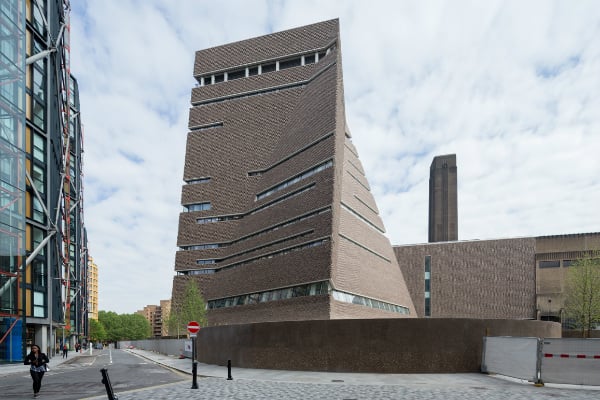
Tate leads the way with a global, gender-balanced vision of modern and contemporary art.

by
Hettie Judah

Six years after ground was first broken, Tate Modern’s new building will finally open to the public at the end of this week. Or, as Tate’s director Nicholas Serota corrects, it is a new Tate Modern that opens: all the permanent displays of the world’s most visited museum of modern and contemporary art have undergone a radical rehang. The balance of the collection—at the levels of gender and geographical origin as well as media—has experienced a deliberate and demonstrable shift in the last decade. Since it first opened in 2000, Tate Modern has pushed the understanding worldwide of the role the museum might play in popular culture: here again it looks likely to continue breaking new territory.
A twisting pyramidal frustum towering to ten stories, Herzog & de Meuron’s Switch House has interior walls of glass overlaid with a carapace of honeycombed brick. Viewed against the forbidding solidity of Giles Gilbert Scott’s power station—now known as the “Boiler House”—the broken edges of the Switch House appear surprisingly insubstantial. Lightness—both in terms of solidity and illumination—is the building’s calling card. Even on a dank and cloud-stoppered morning, the interior felt airy and radiant.
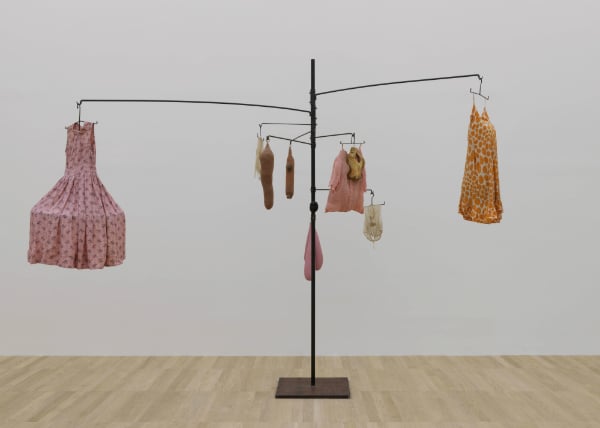
Louise Bourgeois has an entire “Artist Room” at the new Tate Modern. Courtesy Tate Modern
Stretching the permanent displays into two buildings has given Tate Modern important breathing space. The contemporary experience of visiting an “event” exhibition entails a dismal shuffle in a cramped conga line of ticket holders, all of whom booked months in advance for the privilege, and who crane to catch sight of suffocated masterpieces as the procession pushes them ever on. Not here, at least in the permanent displays. For a start the exhibitions have no designated end and beginning, and there is no sense of fixed pace. Some rooms teem with works, while others are given over to the display of generously proportioned installations—such as Sheela Gowda’s sinister web of hair and car fenders, Behold (2009)—or such substantial sculptures as Phyllida Barlow’s untitled: upturnedhouse, 2 (2012).
Much like a train station that constructs its platforms at double length to accommodate the megalocomotives of an unspecified future, one senses that Tate has acquired itself this extra space for a continually expanding collection and art’s own unpredictable evolutions. The current arrangement is just the opening move for an institution that, under the direction of Frances Morris, is committed to keeping an open mind and embracing whatever shifts the coming art world will bring it.
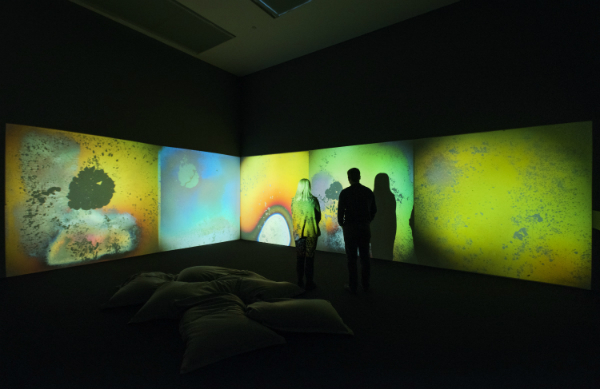
Gustav Metzger at the new Tate Modern. Courtesy of Tate Modern
For those who like that kind of thing, the new Tate Modern opened with a bundle of sexy figures that reflect the diversity of its rehang: the free collection displays feature 800 works by over 300 artists from more than 50 countries. 75 percent of the work on show has been purchased since 2000, over half of the solo displays are dedicated to works by female artists. While this in turn reflects a wider artworld tendency away from the established white male Modernist canon, and toward a global, more gender-balanced vision of modern and contemporary art, Tate seems to lead the field. (Reviewing the expanded and rehung SFMoMA last month, Roberta Smith noted in the New York Times that “Diversity… remains its big challenge.”)
On the ground, those statistics feel anything but tokenistic—El Anatsui sits comfortably beside Richard Deacon, Jiro Takanata lines up with Carl Andre and Barry Flanagan. The first works in the first gallery one encounters in the Switch House are by Joan Jonas, Angela Bulloch and Lygia Clark, with a Lynda Benglis lead pour slumped kitty corner. The weight given to the work of female artists in the displays is transformative. Seeing generous space given to outstanding collection of works by artists such as Rebecca Horn actually provoked an emotional response, as if one had been an adherent to an obscure religious cult or branch of philosophy, the rites of which were contained only in the pages of devotional books, then suddenly found one’s private creed embraced by the mainstream and its iconography on public display for all to admire.
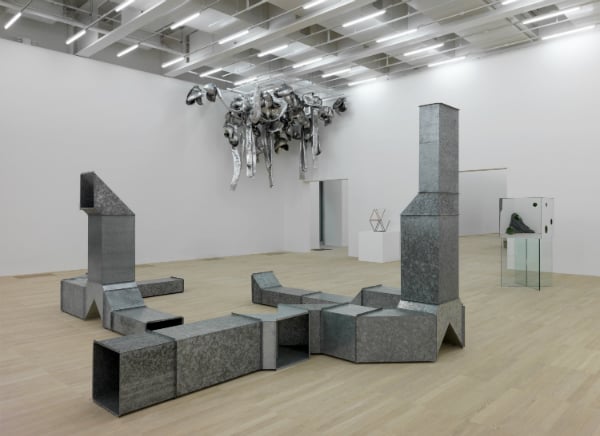
“Between object and architecture,” a themed display at the new Tate Modern. Courtesy of Tate Modern
Here too, as one greets a room of works by Meschac Gaba like a suite of old friends, it becomes evident the role Tate has played in pushing the institutional agenda—and artist recognition—in recent years. Following last autumn’s conference on new media art, it is also instructive to see the museum’s approach to moving image, performance, and other forms that can have a potentially disruptive impact on the rhythm of displays. There are sizeable (sound proofed) suites for moving image works scattered throughout, as well as separate suites for artist documentaries. Gustav Metzger’s self-annihilating oeuvre is explored through documentation.
Live art looks set to be front and foremost in the programming. The opening weekend features works by Tania Bruguera, Tino Sehgal, and Peter Liversidge; a crowd-pleasing move for an institution that has, at times, equally garnered criticism for transforming the art museum into a funpalace.
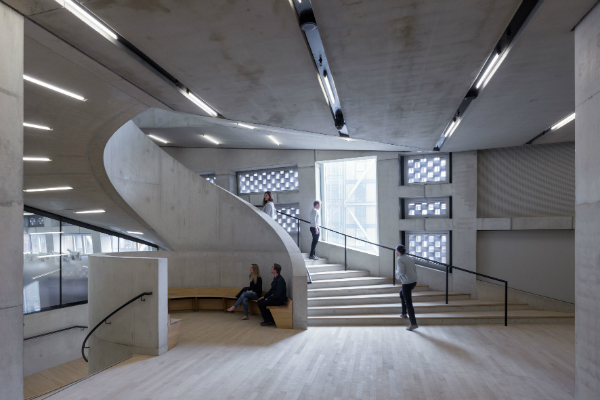
The new Tate Modern, designed by Herzog & de Meuron. Courtesy of Tate Modern, Photo by ©Iwan Baan
When it first opened, Tate Modern was also widely roasted for its captioning, which was extensive, instructive and included quotes about the artworks from figures in popular culture. New Tate has instead opted for changes of pace: most captions are limited to the basics, but one occasionally encounters large educational displays, such as “Why Make Art From Everyday Things?” which shares a room with the 1964 replicas of Duchamp’s Fountain (1917).
As a delightful totem of the contemporary intruding on the art, perhaps the most extensive signage in the museum is now reserved for detailing the provenance of—and rights afforded to—the large macaw parrots in Hélio Oiticica’s Tropicália, Penetrables PN 2 (1966).